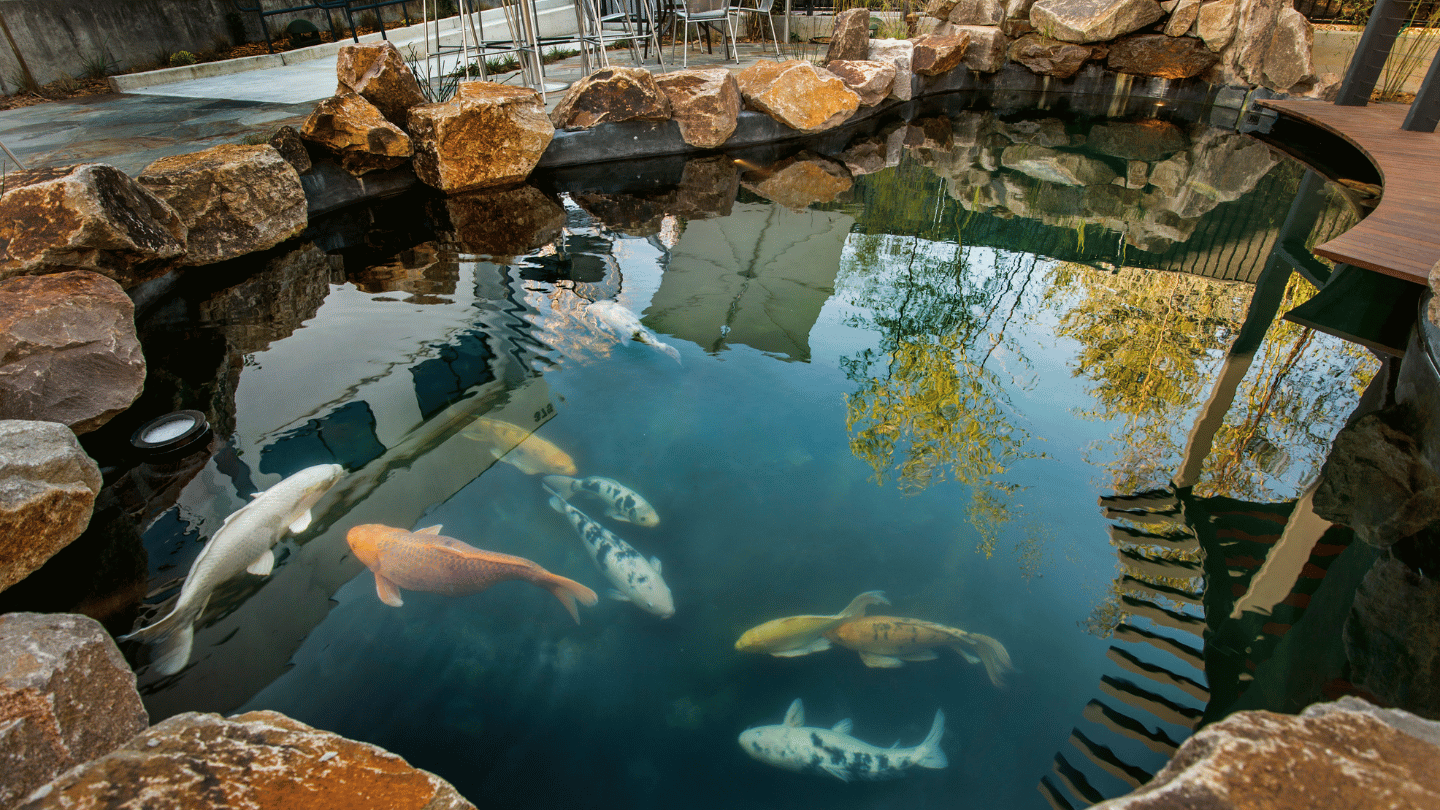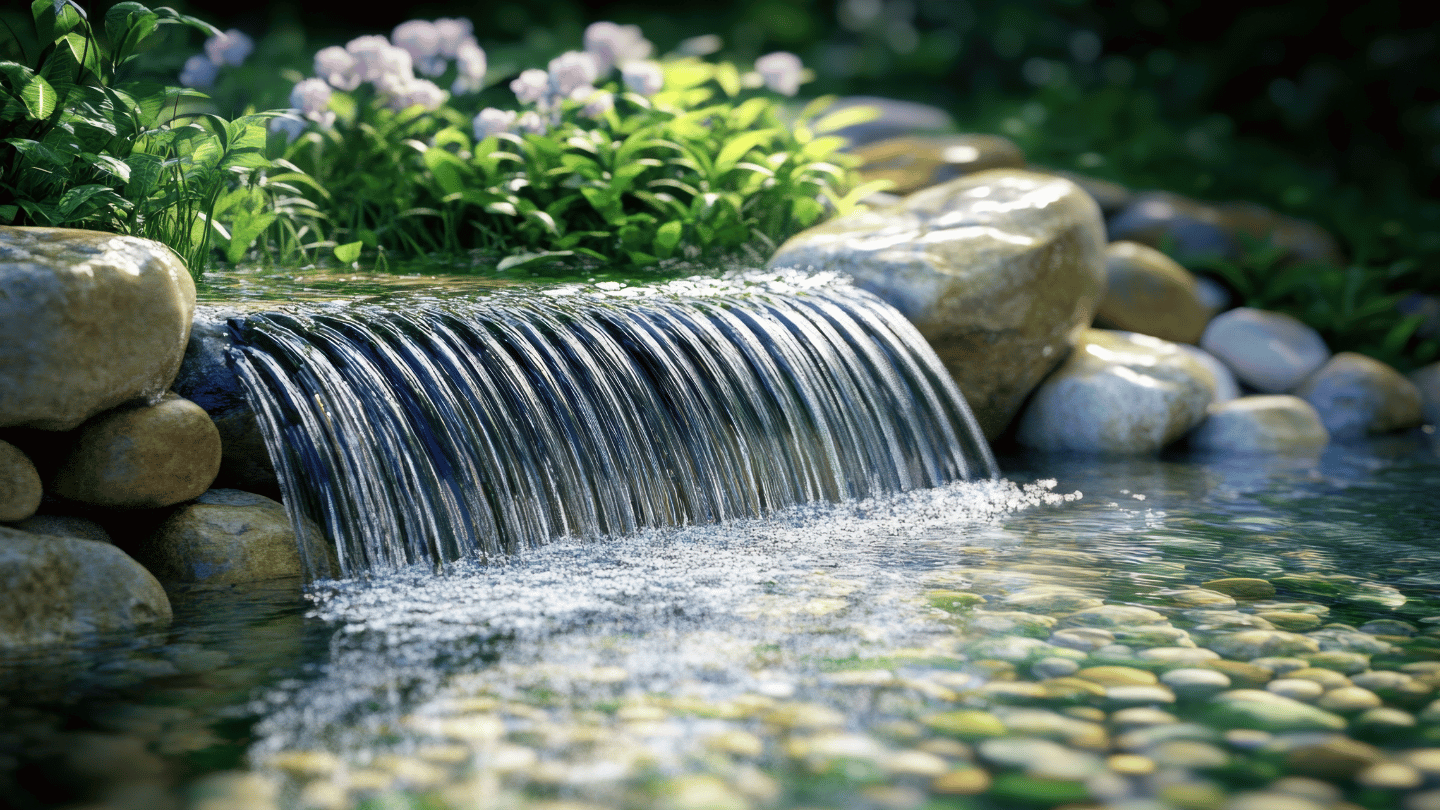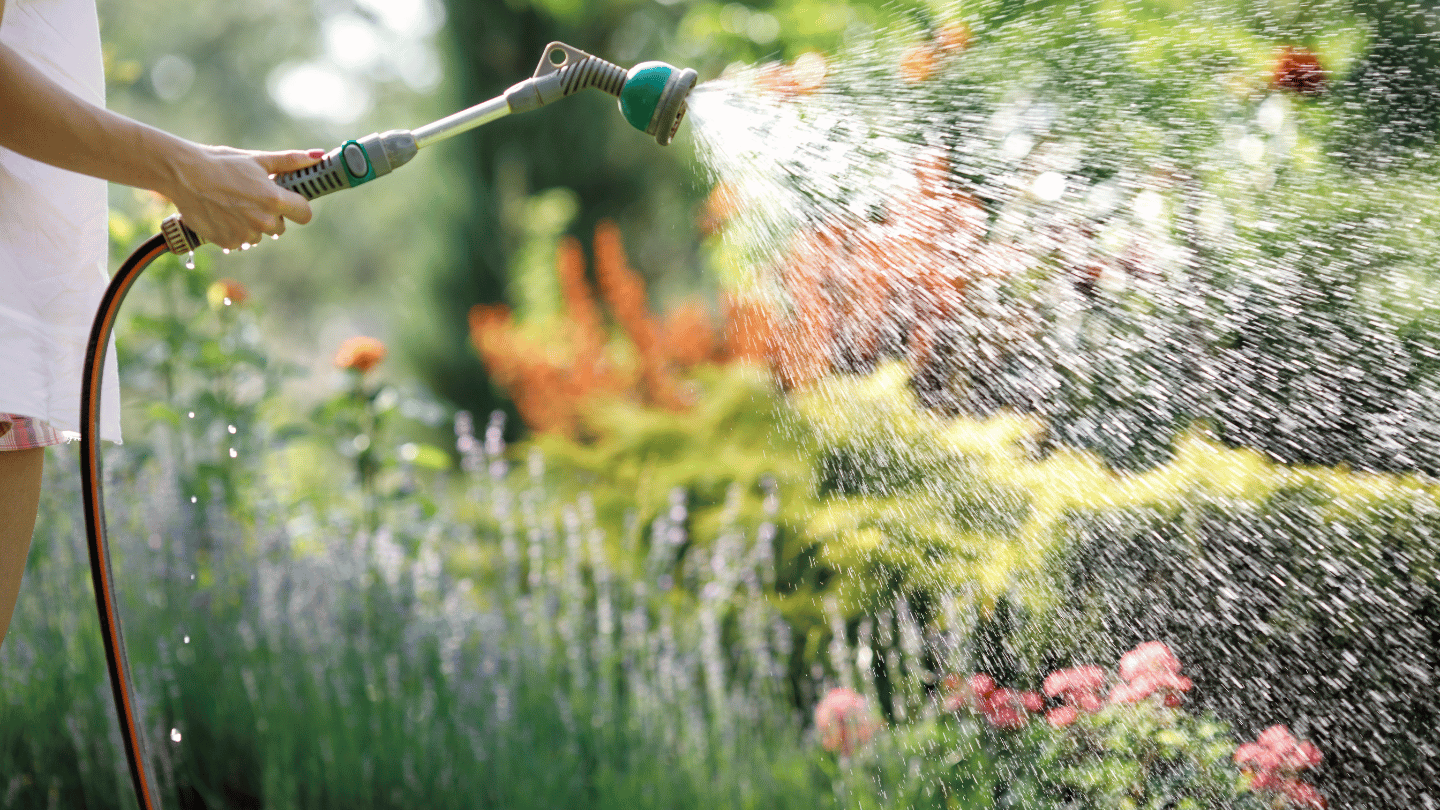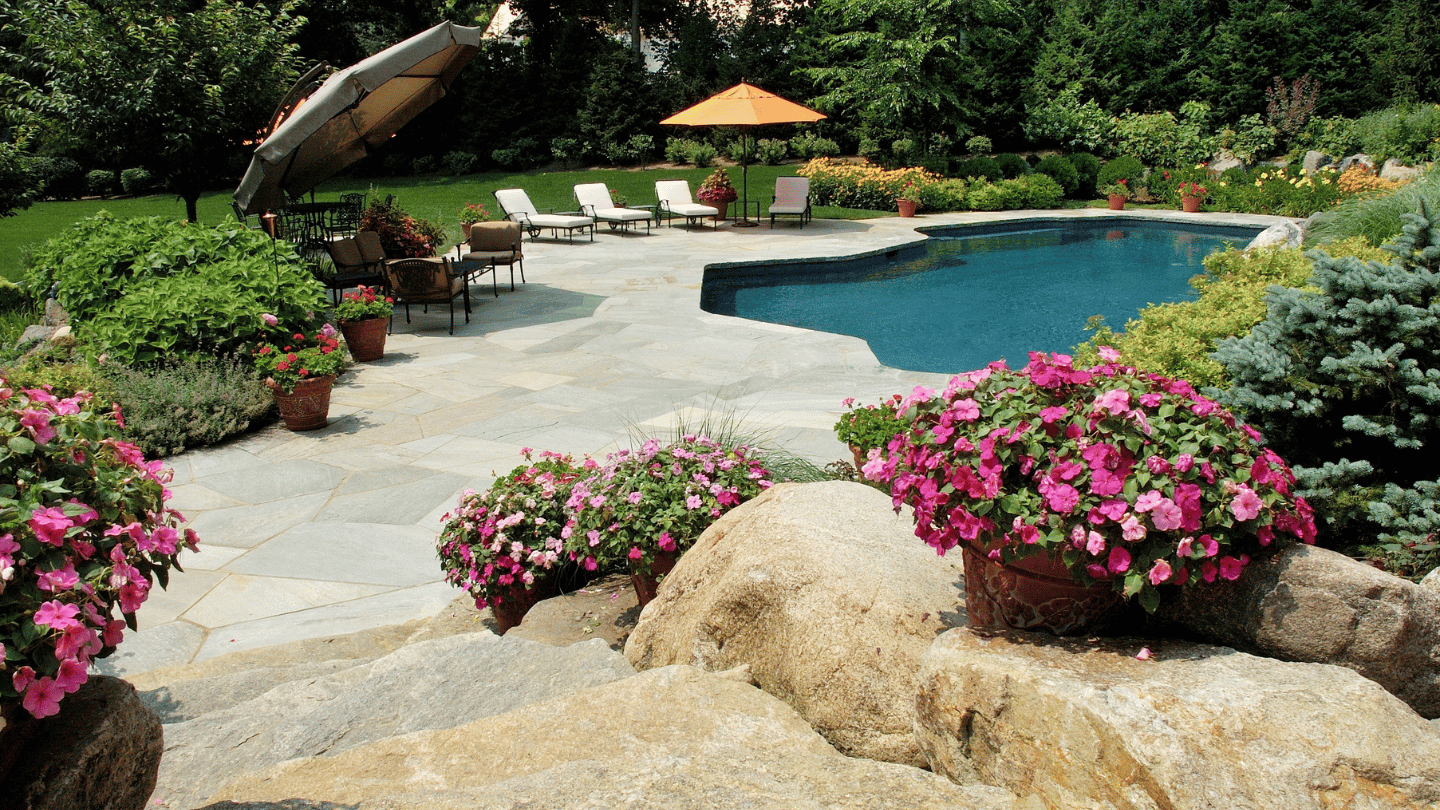You can drop a small fortune on a Beverly Hills koi pond and still end up with something that looks bolted on. We've seen it plenty—stunning homes where the pond feels like an afterthought, or worse, a high-maintenance headache the homeowner wasn't expecting.
The difference between a pond that works and one that doesn't comes down to treating it like architecture, not just a backyard add-on. When you're dealing with tight lots where every sight line matters, the pond needs to earn its place. That means nailing the location, choosing materials that actually get better with age, and building in filtration that keeps the water clear without constant fussing.
Placement isn't just finding an empty spot. Your pond should sit where you'll actually see it—from the kitchen window, off the terrace, wherever you spend your time. Even a modest pond makes an impact when it's framed by stone steps, planters, or a clean patio edge. On larger estates, we'll do multi-level systems or formal reflecting edges that echo the home's architecture. A deep, narrow pond with honed stone coping gives you proportion and refinement on tighter lots, not that cramped feeling you're trying to avoid.
Materials matter more than most people realize. We stick with natural stone, charcoal plaster, or architectural concrete—finishes that look better five years in than they do on install day. The mechanical equipment? It goes in a vault or tucked-away cabinet. Nobody wants to stare at skimmers and pump boxes while they're trying to unwind in their own backyard.
Water quality is where luxury ponds fail most. Koi need depth—usually 3 to 4 feet at the deepest point—so they can escape the brutal sun and you're not fighting algae blooms all summer. But depth alone won't save you. You need proper turnover: pumps and plumbing sized to move the volume through mechanical and biological filtration. We separate the skimmer, bio filter chamber, and UV sterilizer. That UV isn't optional in sunny Southern California unless green water by July sounds appealing.
For bigger builds, a bottom drain and sump system make maintenance infinitely easier. Without them, you're netting debris off the bottom every week, and that gets old fast.
Keep the design restrained. Beverly Hills homes don't need junglescapes. A handful of water lilies for surface cover, some marginal plants around the edges, and drought-tolerant Mediterranean shrubs in nearby beds—that's plenty. The hardscape should mirror the house: clean waterfall lines for modern homes, layered natural boulders for traditional estates. And dial in that waterfall flow. You want ambiance, not a noise level that kills conversation on the patio.
Lighting makes the nighttime presence: underwater LEDs for the fish, grazing lights on stonework, path lights so the whole feature reads clearly after dark. Just don't overdo it—restraint is what feels expensive.
Maintenance doesn't have to be a part-time job. If you're checking on your fish weekly, skimming debris, and making sure the pump's running, you're ahead of most people. Backwash the filters and test your water chemistry—ammonia, nitrite, nitrate, pH—once a month. Seasonally, you'll remove organic matter in spring, watch dissolved oxygen during summer heat, and toss a leaf net over the pond in fall if you've got big trees nearby.
Automated feeders and timed UV systems cut down the manual work. Or you can hand it off entirely—we run biweekly or monthly maintenance plans that keep everything show-ready while you stay blissfully ignorant of pond mechanics.
One last thing: check your HOA rules and local codes before breaking ground. Plenty of Beverly Hills properties have design review processes, and you don't want to be mid-construction when you find out you need approval for electrical or structural work.
The bottom line? A koi pond in Beverly Hills should feel deliberate—thoughtfully placed, elegantly built, and engineered so smoothly you'd never guess there's a filtration system working overtime somewhere. When it's done right, it's a low-stakes feature that adds real value and gives you something genuinely pleasant to look at every day.
If you're ready to see what works for your property—whether that's a compact deep installation for a smaller lot or a multi-level setup with dramatic waterfalls—we'll walk your site and show you what's actually possible. No guesswork, just workable design.





.jpg)





.jpg)